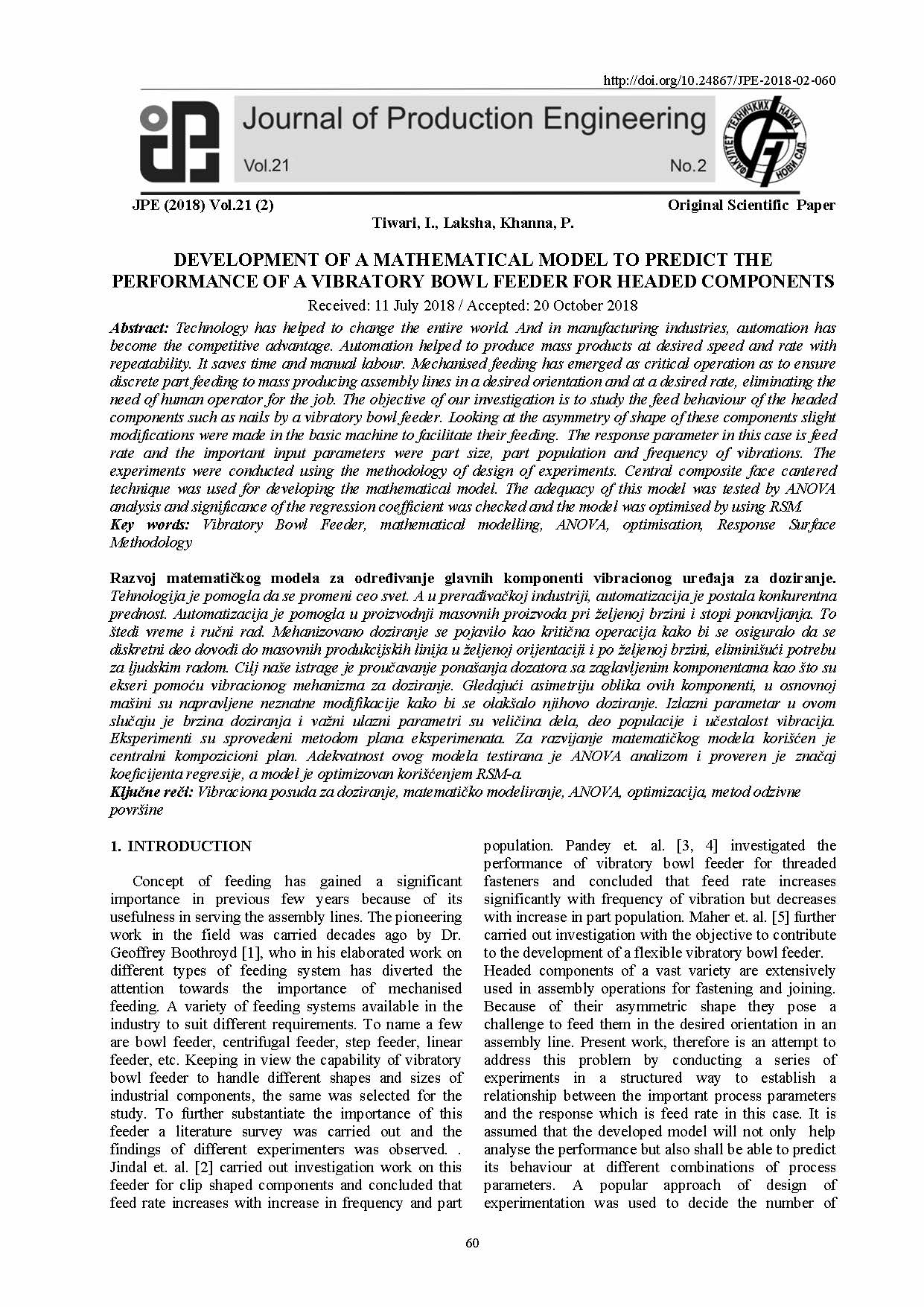Development of a mathematical model to predict the performance of a vibratory bowl feeder for headed components

Published 2018-12-30
abstract views: 177 // FULL TEXT ARTICLE (PDF): 114
Keywords
- Vibratory Bowl Feeder,
- mathematical modelling,
- ANOVA,
- optimisation,
- Response Surface Methodology
How to Cite
Copyright (c) 2023 Journal of Production Engineering

This work is licensed under a Creative Commons Attribution 4.0 International License.
Abstract
Technology has helped to change the entire world. And in manufacturing industries, automation has become the competitive advantage. Automation helped to produce mass products at desired speed and rate with repeatability. It saves time and manual labour. Mechanised feeding has emerged as critical operation as to ensure discrete part feeding to mass producing assembly lines in a desired orientation and at a desired rate, eliminating the need of human operator for the job. The objective of our investigation is to study the feed behaviour of the headed components such as nails by a vibratory bowl feeder. Looking at the asymmetry of shape of these components slight modifications were made in the basic machine to facilitate their feeding. The response parameter in this case is feed rate and the important input parameters were part size, part population and frequency of vibrations. The experiments were conducted using the methodology of design of experiments. Central composite face cantered technique was used for developing the mathematical model. The adequacy of this model was tested by ANOVA analysis and significance of the regression coefficient was checked and the model was optimised by using RSM.

